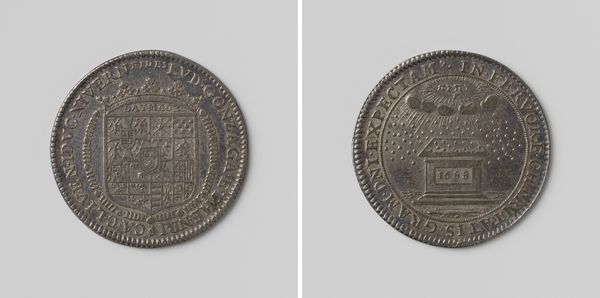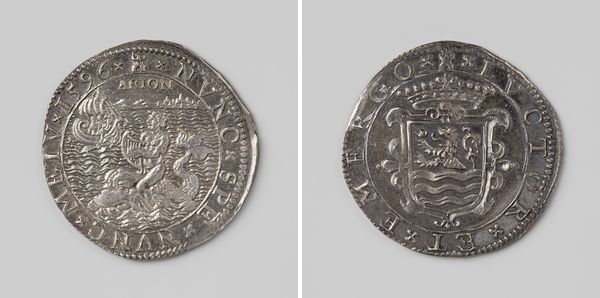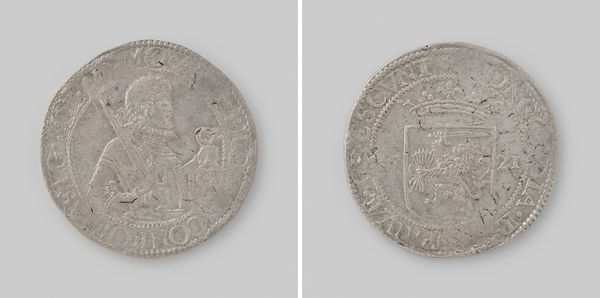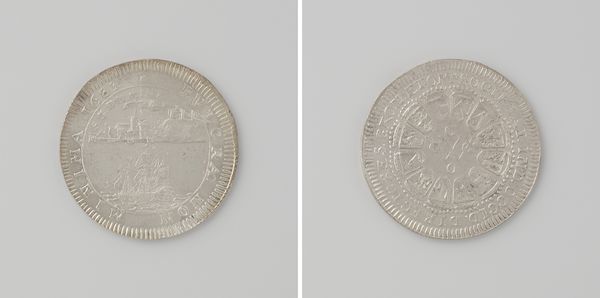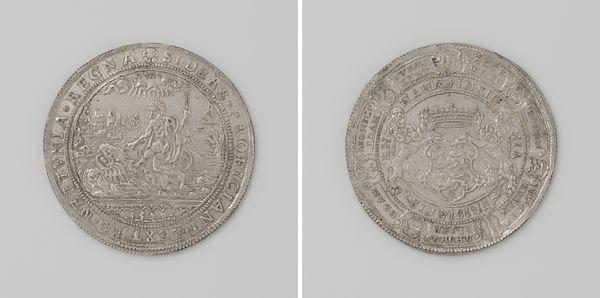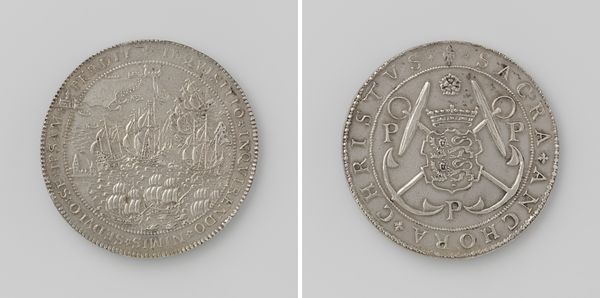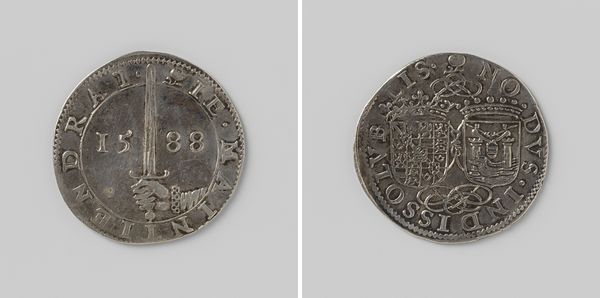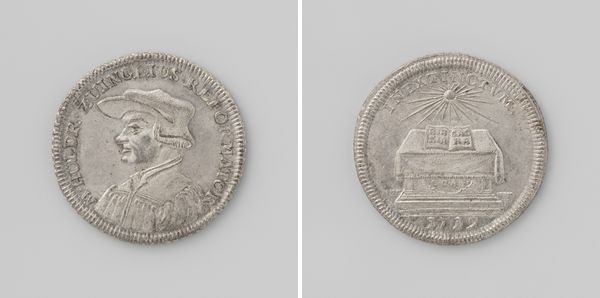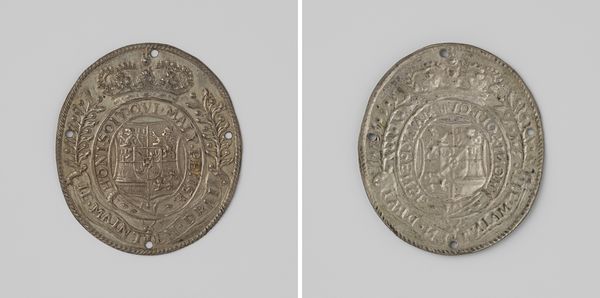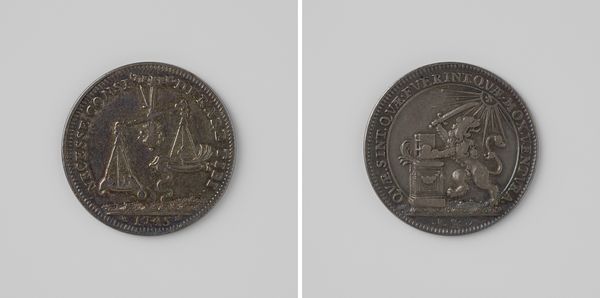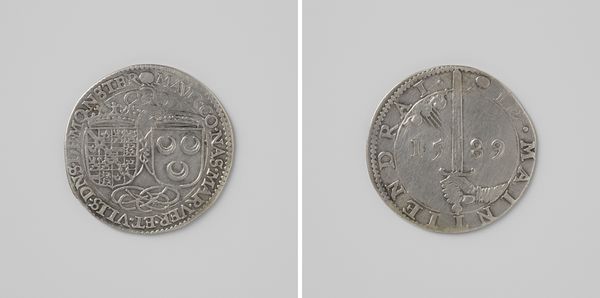
Penning door de admiraliteit van West-Friesland aan scheepslui vereerd c. 1648 - 1650
0:00
0:00
anonymous
Rijksmuseum
print, metal, relief
#
portrait
#
dutch-golden-age
# print
#
metal
#
relief
#
history-painting
Dimensions: diameter 3.3 cm, weight 16.15 gr
Copyright: Rijks Museum: Open Domain
Editor: This intriguing medal, dating from about 1648 to 1650, is titled "Penning door de admiraliteit van West-Friesland aan scheepslui vereerd," and comes from an anonymous artist. It seems to be made of metal and features a ship. What stands out to me is its functional purpose combined with detailed relief work. How might we interpret the significance of its materials and purpose? Curator: For me, its materiality screams importance. The decision to use metal is clearly a deliberate one. It’s not just about creating a commemorative object, but about using a material – likely silver, given its appearance – associated with value and prestige to reward labor and service. Think about what this medal represented: payment, honor, and social status, all materially embodied. The relief itself acts as another kind of 'labor,' doesn't it? Skilled artisanal work representing maritime industry and West-Friesland authority, immortalized in costly and workable material. What processes might have shaped this item, physically, economically and socially? Editor: I hadn’t considered the medal as a direct representation of payment and labor! I suppose the depiction of a ship reflects the skills that earned the scheepslui this honorarium, reinforcing their value and societal contribution through their connection with the Admiraliteit van West-Friesland. The silver connects with both commerce and social hierarchy. Curator: Exactly. It challenges our easy distinctions between 'high art' and craft, or even mere transactional commodity, showing they are often entangled. Think of the broader system of trade, shipbuilding, and reward. The Dutch Golden Age depended on seafaring and naval power, reflected materially in every strike and every etched line. This humble-seeming piece becomes much bigger, encompassing complex relations, labor hierarchies, the importance of materials, and its relationship with those processes that determined the worth of an object or service in 17th century West-Friesland. Editor: That's given me so much to think about regarding labor, social status and maritime trade reflected in something like a medal! Curator: Yes, and it all starts with thinking about the object as something material and made!
Comments
No comments
Be the first to comment and join the conversation on the ultimate creative platform.
